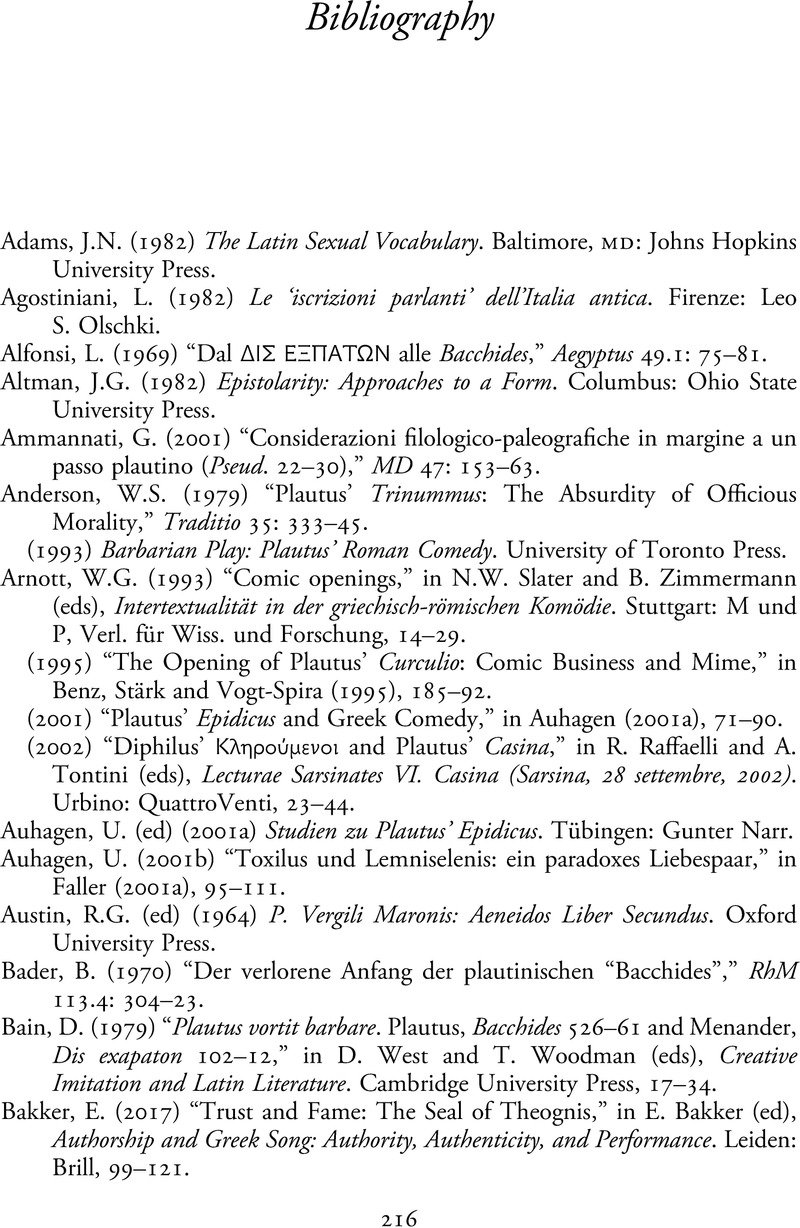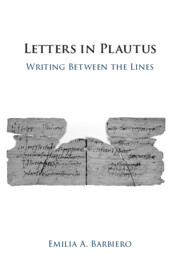Book contents
Bibliography
Published online by Cambridge University Press: 01 December 2022
Summary

- Type
- Chapter
- Information
- Letters in PlautusWriting Between the Lines, pp. 216 - 227Publisher: Cambridge University PressPrint publication year: 2022



